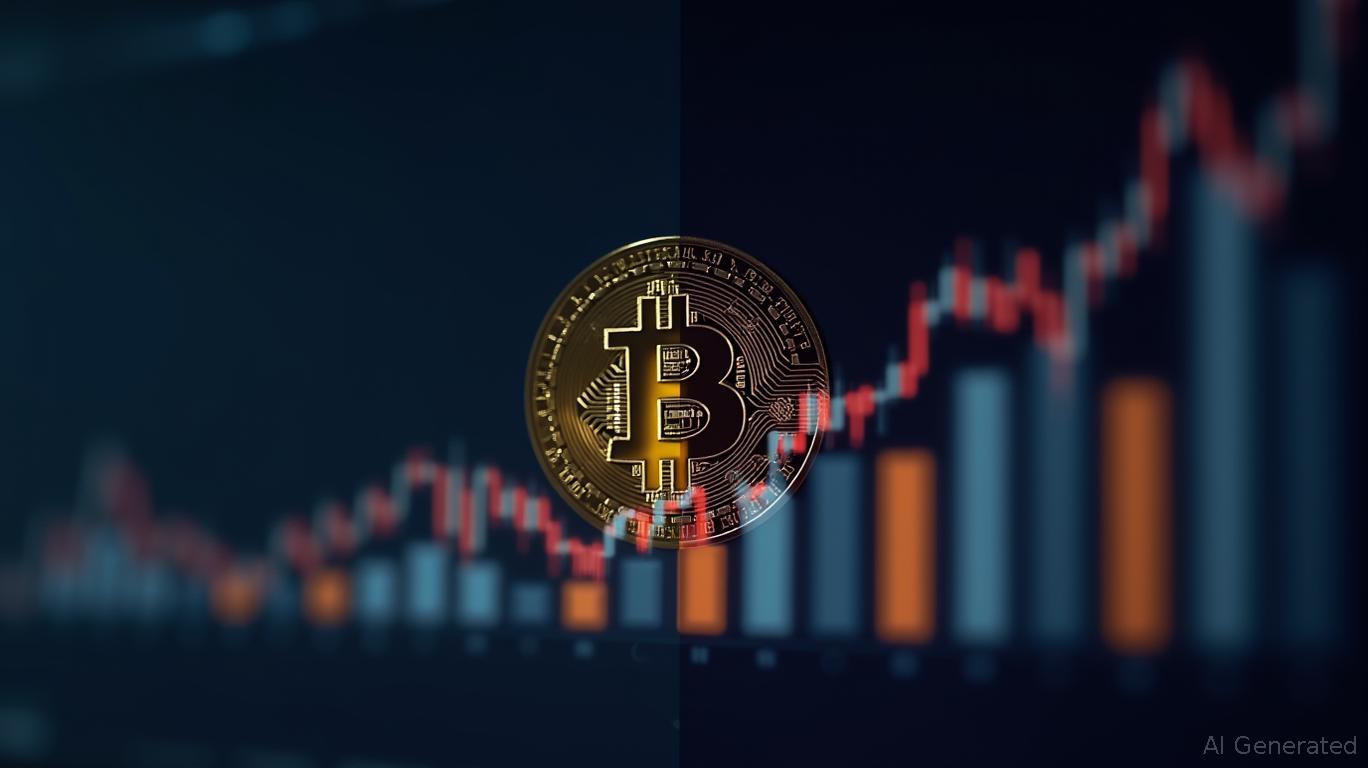STRD Preferred Stock: A High-Yield Gateway to Institutional Bitcoin Adoption?
The rise of institutional Bitcoin adoption has created new opportunities for investors seeking exposure to the
while balancing yield and capital preservation. Strategy, Inc.'s recent offering of its 10% Series A Perpetual Stride Preferred Stock (STRD) presents a unique hybrid instrument at this intersection. While STRD's non-cumulative dividend structure and lack of conversion rights set it apart from traditional preferred stocks, its role in funding Bitcoin purchases positions it as a potential bridge between fixed-income strategies and crypto accumulation. Let's dissect its risk-reward profile for high-yield investors.
The STRD Structure: High Yield, No Guarantees
STRD's headline 10% annual dividend immediately grabs attention—far above the average 5-6% yield on traditional preferred stocks. However, this comes with critical caveats. Dividends are non-cumulative, meaning unpaid dividends do not accrue or become due if the board skips a payment. This contrasts sharply with most preferred stocks, where missed dividends accumulate. The company's financial flexibility—or lack thereof—could directly impact payouts.
The lack of conversion rights further distinguishes STRD. Unlike convertible preferred stocks (e.g., STRK, Strategy's earlier offering), STRD holders cannot exchange shares for common stock or other securities. This eliminates upside participation in equity appreciation but also removes dilution risk. Investors are locked into a pure fixed-income instrument tied to the company's ability to pay.
Bitcoin Exposure via Institutional Buying Power
STRD's proceeds—$979.7 million net—will fund general corporate activities, including Bitcoin purchases. This creates a second-order exposure to Bitcoin: STRD holders indirectly benefit if the company's Bitcoin holdings appreciate. Strategy's stated focus on Bitcoin as a “primary reserve asset” aligns with its track record of accumulating the asset through debt and equity offerings.
The stock's liquidation preference adds nuance. Its $100 per-share base adjusts daily to the highest of three metrics: the stated amount, the prior day's closing price, or a 10-day average. This mechanism aims to protect investors from prolonged price declines but introduces volatility. If Bitcoin's value stagnates or declines, the company's ability to buy more Bitcoin cheaply might offset some risks—but not guarantee shareholder returns.
Risks: Dividend Volatility and Counterparty Dependence
STRD's risks are twofold. First, dividend volatility hinges on Strategy's financial health. The company faces legal challenges, including a class-action lawsuit, and its debt-heavy capital structure (including convertible notes) could strain cash flow. If earnings or Bitcoin prices falter, dividends could be slashed or suspended.
Second, counterparty risk looms large. STRD holders rely entirely on Strategy's management to allocate proceeds wisely and sustain operations. Unlike owning Bitcoin directly, investors here bet on the company's execution—its ability to buy Bitcoin at advantageous prices and navigate regulatory headwinds.
The Risk-Reward Tradeoff: Worth the Gamble?
For high-yield investors, STRD offers a high-risk, high-reward proposition. The 10% dividend provides an attractive income stream in a low-yield environment, but it's only secure if Strategy's cash flows remain stable. The Bitcoin exposure adds a speculative layer—if institutional adoption accelerates and Bitcoin's price climbs, STRD holders could see capital gains via the liquidation preference mechanism.
Investment Consideration:
STRD could be a compelling satellite holding for portfolios seeking yield and Bitcoin exposure, but it should not be a core position. Investors must weigh:
1. Dividend Dependence: Are they comfortable with non-guaranteed payouts?
2. Bitcoin Correlation: Does the stock's performance align with their views on Bitcoin's institutional adoption trajectory?
3. Company-Specific Risks: Can Strategy navigate its legal and financial challenges?
Final Verdict
STRD's structure is a bold experiment in blending yield and crypto exposure. For risk-tolerant investors with a long-term Bitcoin bullish stance, it offers a way to capitalize on institutional buying power while earning double-digit income. However, the lack of dividend guarantees and company-specific risks make it a speculative play. Proceed with caution—allocate a small portion of a diversified portfolio, and monitor both Bitcoin's trajectory and Strategy's financial health closely.
In the race to institutionalize Bitcoin, STRD is a side bet on Strategy's execution. The question remains: Is the yield worth the gamble? For some, the answer is yes—but only if they're ready to accept the volatility.

Comments
No comments yet